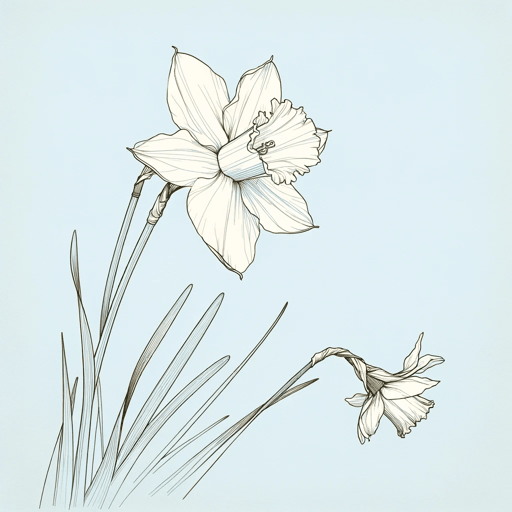17 pages • 34 minutes read
Robert HerrickTo the Virgins, to Make Much of Time
Fiction | Poem | Adult | Published in 1648A modern alternative to SparkNotes and CliffsNotes, SuperSummary offers high-quality Study Guides with detailed chapter summaries and analysis of major themes, characters, and more.
Summary and Study Guide
Overview
“To the Virgins, to Make Much of Time” is a poem composed of four quatrains written by Robert Herrick in the 17th century. Herrick published the poem in 1648 as part of his poetry collection Hesperides. The text falls under the carpe diem genre of poetry, a genre popular during the Renaissance, which encouraged individuals to “seize the day.” In Herrick’s poem, a speaker encourages his readers—the virgins mentioned in the title—to make the most of their lives by marrying and giving themselves over to the pleasures of life (sexual and otherwise). While the message intended could simply be the speaker’s own sexual gratification, the poem contains universal themes of time, change, and the transience of life. The poem also follows a standard rhyme scheme as well as a relatively regular meter. Herrick was an Anglican vicar, an occupation which may initially seem at odds with the sexual, frivolous nature of some of his poems. Yet, the turmoil of the English Civil War around him likewise greatly affected Herrick’s outlook on life. He is considered a Cavalier poet, due to his Royalist political views supporting King Charles I, sympathies which caused him to lose his position as vicar at Dean Prior and further impacted his philosophies on life.
Poet Biography
Born on August 24, 1591, Robert Herrick began life as the son of a tradesman. Nicholas Herrick, Robert Herrick’s father, was a jeweler and goldsmith. Herrick’s father killed himself by falling from a window when Herrick was just a little over a year old. Herrick was sent with his two older brothers to live with their uncle while Herrick’s mother, Julian, continued to care for Herrick’s two other siblings. Herrick followed in the family business, serving as his uncle William’s goldsmith apprentice before enrolling in Saint John’s College in Cambridge. Herrick’s apprenticeship lasted six years, from age 16 to 22. The whole apprenticeship was supposed to last 10 years but was cut short (“Robert Herrick.” Poets.org).
After graduating from Cambridge at the age of 26, Herrick began his religious vocation when he was 32. He was ordained and took the role of “domestic chaplain to the Duke of Buckingham on his ill-fated expedition to La Rochelle”—a siege in the Anglo-French War in 1627 (“Robert Herrick.” Westminster Abbey). Following this position as chaplain, Herrick stepped into his most notable role as the vicar of Dean Prior in Devon. He began his vicarage in 1629 and served until he died in 1674. In this time, Herrick was removed from his vicarage from 1647 through 1662 due to his political ideals. The turmoil of the English Civil War and Herrick’s Royalist inclinations supporting the monarchy made him a political target and was the reason for his removal from his religious office (“Robert Herrick.” Poets.org). Many other religious officials were removed from their roles as well for similar reasons.
Some scholars debate whether Herrick ever married. On the one hand, some sources claim that he never did marry. On the other hand, some sources say he married Lettice Yarde in 1639. A good portion of Herrick’s poems feature a speaker addressing his mistress. Because of this, “literary gossips have revelled [sic] in speculations about the identities of the 14 ‘mistresses’ (in the 17th century, inamoratas, lady friends, or merely admired acquaintances) to whom he addressed 158 poems” (“Robert Herrick.” Poetry Foundation).
In total, Herrick composed and published over 1200 poems. In 1647, he produced His Noble Numbers, a collection of religious poems. The following year, Herrick published Hesperides; or, the Works Both Humane and Divine of Robert Herrick, Esq. This verse collection appeared in the volume along with His Noble Numbers. Considered to be a Cavalier poet due to his political views supporting Charles I, Herrick was also considered to be one of the “Sons of Ben.” The “Sons of Ben” were men who admired Ben Jonson’s work and followed his theory and style of writing. Herrick also gleaned inspiration from the Greek and Roman classics. His texts range from pastorals, to works about love, religion, and even lewd and obscene works (“Robert Herrick.” Poets.org).
Poem Text
Gather ye rose-buds while ye may,
Old Time is still a-flying;
And this same flower that smiles today
Tomorrow will be dying.
The glorious lamp of heaven, the sun,
The higher he’s a-getting,
The sooner will his race be run,
And nearer he’s to setting.
That age is best which is the first,
When youth and blood are warmer;
But being spent, the worse, and worst
Times still succeed the former.
Then be not coy, but use your time,
And while ye may, go marry;
For having lost but once your prime,
You may forever tarry.
Herrick, Robert. “To the Virgins, to Make Much of Time.” 1648. Poetry Foundation.
Summary
“To the Virgins, to Make Much of Time” opens with a command, or plea, on the part of the speaker. The speaker desires his audience to make the most out of life, because time is passing by. The speaker moves into numerous lines of imagery highlighting the passage of time. The first description is of a once vibrant and verdant flower now wilted and dead. The second set of lines shows the sun rising in the sky and setting. Next, the speaker details the succession of youth by age. After describing these symbols of time and change, the speaker ends the poem with a plea similar to that with which the poem opens. The speaker wants their readers to not waste their time hiding their feelings and passions, but rather to go marry and achieve sexual gratification before they leave the prime of their youth.
Related Titles
By Robert Herrick




